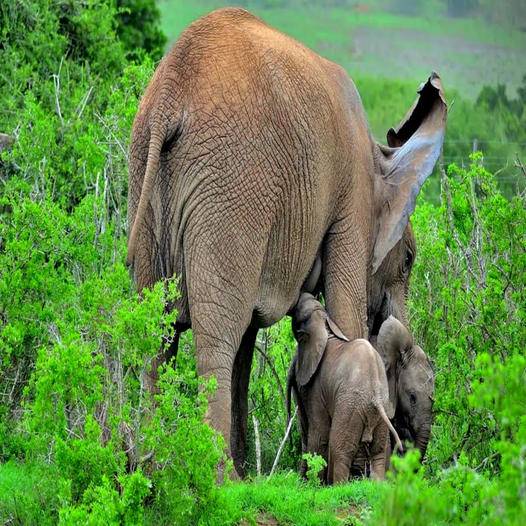Gazania is an incredibly resilient plant that thrives in hot and dry environments. Its flowers are stunning, reaching up to 4 inches in size and displaying vibrant colors. While most gazanias are grown as annuals, there are some perennial varieties that can withstand even Zone 4 winters.
Although the hardy and annual gazanias look quite similar, there are a few differences between them. Annual varieties tend to have larger blooms, brighter colors, and slightly bigger leaves with silvery-white undersides. They also bloom more frequently and for longer periods of time. On the other hand, perennial varieties have simpler colored blooms that only appear in the summer. These blooms are typically a solid color with minimal markings. Additionally, perennial gazanias have slightly smaller flowers and more foliage overall.
It’s worth noting that all gazania varieties only open their blossoms during the day. During the night or on overcast days, the flowers remain tightly closed.
When it comes to growing gazanias, they thrive in full sun. It’s crucial to provide them with as much sunlight as possible, as they become more susceptible to foliage issues like powdery mildew in shady areas. These plants are highly tolerant of heat and drought, making them suitable for both coastal and arid regions. Gazanias can be grown in various settings, from container gardens to trailing groundcovers. They also make excellent edging plants for walkways, as long as they receive bright sunlight for most of the day.
To plant gazanias, it’s important to keep in mind that they don’t like to be in overly wet conditions. Originating from South African mountains with rocky cliffs and grassy hills, they are well-adapted to dry climates. Plant them in well-draining soil in early spring. The pH level of the soil is not crucial as long as it remains dry most of the time. If you have heavy soil, consider planting gazanias in pots instead of directly in the ground.
Gazanias require minimal care and maintenance. They love the sun and mostly dry soil, making them ideal for rocky garden areas and high-heat locations like around cement or stone. Full sunlight is crucial for their growth. They prefer loose, well-draining soil that’s slightly sandy and has a neutral pH. Keep the soil dry, water early in the day, and avoid excessive moisture to prevent root rot and powdery mildew. Gazanias thrive in hot, dry temperatures and low humidity. Mulch can be used to protect them from cold temperatures, but they won’t survive harsh frosts, so it’s best to treat them as annuals in colder climates. Fertilizing is not necessary, and deadheading spent blooms will encourage new growth.
Gazanias can be easily grown in pots, and they also do well when propagated from seeds. Plant them around the edges of the pot to showcase their trailing properties. Potted gazanias can be brought indoors for overwintering.
These plants are generally not prone to pests or diseases, but it’s essential to watch out for mealybugs on indoor plants and keep the soil dry to avoid root rot.
Propagating gazanias can be done through stem cuttings. Take several cuttings near the base of the plant where there is new growth, and plant them in containers with potting soil. Grow them indoors in bright sunlight and transplant them to the garden in spring.
Gazania varieties offer a wide range of colors and patterns. The warm end of the palette is dominant, with bright yellows, oranges, and reds, often with splashes of hot pinks. Flowers usually have a base color with brushstrokes of a darker tone in the middle.
One particular variety of gazania is the ‘Sunbather’s Sunset’, which features beautiful sunset colors.
:strip_icc():format(webp)/sunbathers-sunset-gazania-f452dc62-06116c351dbd4b868bb935ff2c168523.jpg)
Introducing Justin Hancock’s magnificent Gazania variety, ‘Sunbather’s Sunset’! With its stunning amber-orange double flowers, this plant is sure to capture your heart. Standing at a height and width of 18 inches, it gracefully decorates any garden. Suitable for zones 4 through 10.
Another delightful addition to your Gazania collection is the beautiful ‘Daybreak Red Stripe’ variety. Its vibrant red stripes make a bold statement in any floral arrangement. This Gazania also thrives in zones 4-10, making it a versatile and eye-catching choice for your garden.
:strip_icc():format(webp)/daybreak-red-stripe-gazania-ad1df0be-98ee4f69c7294edcb0d551a72c3acf8e.jpg)
Scott Little’s Gazania variety, known as ‘Daybreak Red Stripe’, showcases stunning golden-yellow flowers adorned with a striking stripe that gracefully runs down every petal. This charming plant reaches a modest height of 10 inches, making it an ideal addition to any garden or landscape. With its adaptability to flourish in zones 4 to 10, ‘Daybreak Red Stripe’ proves to be a versatile and delightful choice for any gardening enthusiast.
Another magnificent option from Scott Little’s collection is the ‘Daybreak Tiger Stripes Mix’ Gazania. This particular Gazania variety offers a captivating blend of colors, creating a mesmerizing visual display. With its wide range of hues and patterns, this mix is sure to bring an enchanting allure to any garden or outdoor space. Embracing the same growth potential as its ‘Daybreak Red Stripe’ counterpart, the ‘Daybreak Tiger Stripes Mix’ adds a touch of vibrancy and charm to landscapes within zones 4 to 10.
:strip_icc():format(webp)/daybreak-tiger-stripes-mix-gazania-e64d582d-96c9b714051645cd8cbd3a94da9f809d.jpg)
The ‘Daybreak Tiger Stripes Mix’ Gazania is a delightful flower that showcases vibrant shades of yellow, pink, orange, and cream, enhanced by a striking band on each petal. This charming plant reaches a height of 10 inches, making it a great addition to any garden. It is suitable for zones 4-10, ensuring that it can thrive in a wide range of climates.
Another eye-catching variety of Gazania is the ‘Kiss White’. With its elegant white blooms, it adds a touch of sophistication to any floral arrangement. Like its counterpart, this Gazania also prospers in zones 4-10, allowing for versatility in its placement and care.
These Gazania varieties are sure to bring beauty and charm to your garden, and their resilience to different climatic conditions ensures that they can be enjoyed by gardeners in various parts of the world. Bring a burst of color to your outdoor space with these lovely Gazanias.
:strip_icc():format(webp)/gazania-rigens-talent-white-6376cc40-315419b4c2ce47948a7c91f61fd0a8c9.jpg)
Graham Jimerson’s Gazania variety called ‘Kiss White’ delights with a profusion of creamy-white flowers that gracefully bloom throughout the entire summer season. Its dark green leaves provide a stunning contrast to the blossoms. This remarkable plant is suitable for cultivation in zones 4 to 10. Additionally, another dazzling option for Gazania enthusiasts is the ‘Talent Mix’.
:strip_icc():format(webp)/talent-mix-gazania-0916bca6-6226fbd10b7e413083cf29aa6d8c45d6.jpg)
Peter Krumhardt introduces Gazania, a delightful flowering plant known for its stunning ‘Talent Mix’ variety. This particular Gazania boasts beautiful blooms that range in color from creamy whites to vibrant pinks, oranges, and yellows. Its charming appearance is enhanced by the soft and fuzzy gray-green foliage. With a wide range of adaptability, Gazania ‘Talent Mix’ can thrive in gardening zones 4 to 10. For a visually appealing garden combination, consider pairing Gazania with the lovely California Poppy.
:strip_icc():format(webp)/california-poppy-eschscholzia-0521bdaa-5ef6791ead5348e0b3f5e3685428654d.jpg)
Hedrich-Blessing Studio presents the California poppy, a delightful and vibrant wildflower that thrives in arid environments. With its stunning satin-like petals in sunset shades, this native wildflower gracefully sways above its feathery, bluish-green leaves. It is particularly fond of impoverished soils, particularly sandy ones. As a cool-season annual, the California poppy blesses us with its vivid hues at the start of the growing season, but unfortunately begins to lose its luster as the scorching summer temperatures take hold.
Now, let’s shift our attention to another enchanting flower: Lisianthus.
:strip_icc():format(webp)/eustoma-balboa-white-lisianthus-098a1609-0ca29016bbfb409e9f9b4bfd590ef2f0.jpg)
John Reed Forsman, an expert in the floral industry, highly recommends Lisianthus as a remarkable choice for cut flowers. Its elegant appearance and long-lasting quality make it a top contender in the floral realm, as it can grace your vase for an impressive duration of 2 to 3 weeks.
However, Forsman acknowledges that growing Lisianthus can be quite challenging, especially when starting from seed. To ensure a successful cultivation process, it is advised to begin with established seedlings. These should be planted in nutrient-rich soil that is well-drained, in an area that receives abundant sunlight, after all risk of frost has passed. It is crucial to maintain moist soil, but be cautious not to overwater the plants.
In some cases, taller variations of Lisianthus may require support in the form of staking, as their long stems are prone to breakage. However, newer dwarf varieties of Lisianthus have proven to be more low-maintenance and carefree.
Moving to another noteworthy floral option, Pentas, also deserves recognition in the world of flowers.
:strip_icc():format(webp)/pink-pentas-lanceolata-9d6ebe1a-fdde3c393105483c8097f655a8e5bd71.jpg)
Kim Cornelison
Pentas stands out as an exceptional plant for attracting butterflies. It boasts a continuous blooming period throughout the summer, even in the most sweltering conditions. Whether grown in containers or in the ground, this versatile plant thrives in various environments. For those with sufficient light, pentas can even be kept as a lovely houseplant. However, it flourishes best when exposed to full sun and grown in moist, well-drained soil.
Frequently Asked Questions
Does gazania reproduce on its own?
In warmer climates where gazania serves as a perennial (zones 10-11), it does have the ability to self-seed. However, this capability is absent in regions where they are grown as annuals.
Are gazanias attractive to butterflies?
Absolutely! Gazania plants hold great appeal for butterflies and frequently attract them in large numbers, making them an excellent addition to any butterfly garden. Additionally, they also have the added benefit of drawing in birds and other pollinators.
What is the reason behind gazania being called the treasure flower?
The name “gazania” was inspired by a Greek theologian named Theodore of Gaza. In Greek, “Gaza” translates to “riches.” This association with wealth explains why the gazania plant is often referred to as the treasure flower.




